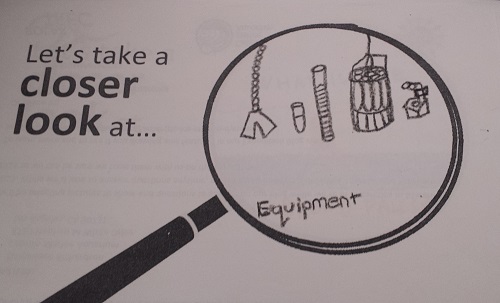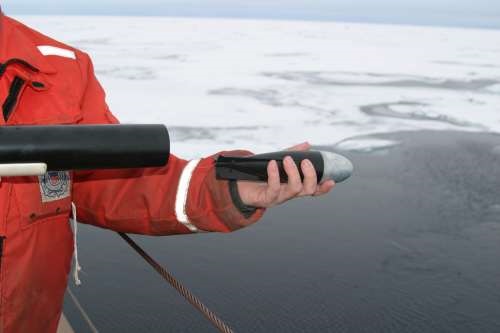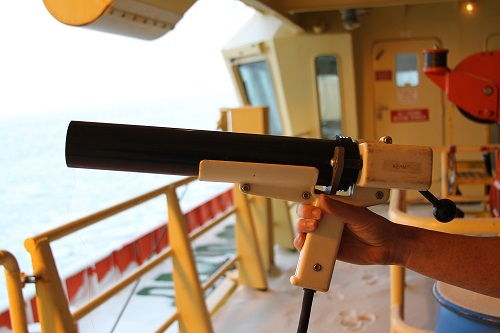Update
It’s been an exciting evening as a storm has rolled into the area. We’ve had winds over 90mph, which is officially hurricane force wind on the Beaufort Scale. Although we’re perfectly safe on the ship, we’ve had to secure everything and most of the decks have been closed for safety (sorry, can’t get outside to take pictures… I don’t even think I’m strong enough to open the door against the winds). We’ve also had to temporarily stop using some of the equipment, like the CTDA research tool that is submerged in the water to measure conductivity (salinity), temperature, and depth., that require a little calmer weather to operate. However, there are still other ways to collect data when the weather is up.
A Closer Look at XBTs

Expendable bathytemperature probes, or expendable bathythermographs,
are another piece of equipment that can be used by oceanographers to
collect data on the temperature structure of the ocean with depth. Like
a CTDA research tool that is submerged in the water to measure conductivity (salinity), temperature, and depth., it descends taking information as it goes. However, unlike a CTDA research tool that is submerged in the water to measure conductivity (salinity), temperature, and depth., it
only collects information on temperature and is not retrievable.

The XBT probe is shot from a gun like device from the ship to the
water. The probe is engineered to fall at a constant rate. As it falls
it collects temperature data and relays that back to the ship through
wires, still attached to the both ends of the device. Because the probe
is specially designed to fall at known rate, depth can be inferred from
the time since the probe was deployed. By plotting the temperature data
from the probe as a function of depth, scientists can visualize the
temperature profile of the water. The temperature profile can tell you
valuable information about the water of an area and it can also be used
to calculate the sound velocity (the speed at which sound will travel
through water, which is impacted by the waters temperature and density)
for the
multi-beam.



Comments